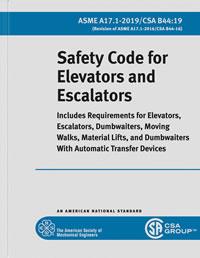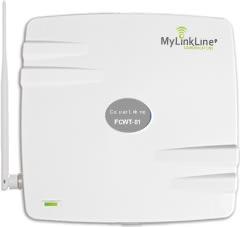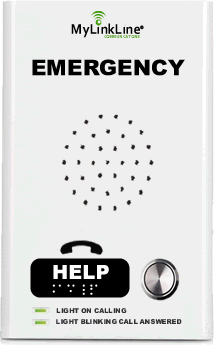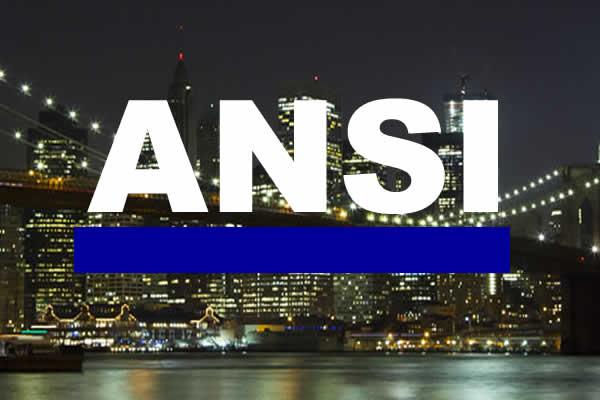ANSI A17.1 Introduction
In today’s fast-paced world, elevators and escalators are a ubiquitous part of our daily lives, transporting millions of people in buildings, malls, airports, and other structures. With increasing urbanization and the construction of ever-taller skyscrapers, the need for standardized safety measures to govern the design, construction, and operation of these vertical transportation systems becomes paramount. The American National Standard Institute (ANSI) A17.1 plays a vital role in ensuring the safety and reliability of elevators and escalators across the United States. This article explores the history, purpose, and significance of ANSI A17.1, highlighting its impact on enhancing safety in vertical transportation
.
Purchase Code Book from ANSI

The Genesis of ANSI A17.1
In the early 20th century, the rapid development of high-rise buildings created an urgent need for safe and efficient vertical transportation systems. As accidents and mishaps involving elevators and escalators increased, stakeholders recognized the necessity for standardized guidelines to govern their installation, maintenance, and usage. In response to this demand, the American Society of Mechanical Engineers (ASME) formed a committee in 1921 to develop a set of safety standards for elevators. This committee’s efforts culminated in the publication of the first edition of A17.1, “Safety Code for Elevators and Escalators,” in 1921.
The standard addresses a wide range of topics, including:
a. Safety Devices: ANSI A17.1 mandates various safety features such as emergency stop buttons, interlocks, door sensors, and overspeed governors to prevent accidents and protect passengers.
b. Load Capacity: The standard specifies the maximum weight capacity for elevators and escalators to ensure they can safely carry the intended load without compromising their structural integrity.
c. Electrical and Mechanical Components: ANSI A17.1 sets guidelines for the design and maintenance of electrical and mechanical components, ensuring they meet safety and performance standards.
d. Firefighter’s Emergency Operation: Elevators are crucial during emergencies for rescue operations. The standard outlines specific requirements for elevator systems to function during fire emergencies.
e. Accessibility: To cater to individuals with disabilities, ANSI A17.1 includes provisions for the installation and maintenance of accessible elevators and escalators, following the Americans with Disabilities Act (ADA) guidelines.
Key Revisions and Updates
Over the years, ANSI A17.1 has undergone several revisions and updates to keep up with technological advancements, changing safety standards, and evolving building codes. These revisions are crucial to address emerging safety concerns and enhance the overall performance of vertical transportation systems.
Some key revisions and updates include:
a. ASME A17.1/CSA B44: In 2010, the ANSI A17.1 standard was harmonized with the CSA B44 standard by the Canadian Standards Association (CSA). This harmonization aimed to create a uniform safety code for elevators and escalators across North America.
b. Incorporation of New Technologies: The standard has continuously incorporated advancements in materials, sensors, control systems, and safety features to improve the performance and safety of elevators and escalators.
c. Enhanced Emergency Communication: With the increasing reliance on mobile devices, the standard has adapted to include provisions for improved emergency communication systems in elevators.
d. Sustainability Measures: Recent revisions have emphasized energy efficiency and sustainability in elevator and escalator designs, promoting eco-friendly practices in the industry.
Impact on Elevator and Escalator Safety
The impact of ANSI A17.1 on elevator and escalator safety cannot be overstated. By providing a comprehensive set of safety guidelines, the standard has significantly reduced the number of accidents, injuries, and fatalities related to vertical transportation systems. It has also instilled confidence in the public, assuring them that elevators and escalators are safe and reliable means of transportation.
Moreover, ANSI A17.1 has contributed to the overall advancement of the elevator and escalator industry. Manufacturers and contractors now adhere to standardized safety practices, leading to improved product quality and reduced liability. Regular inspections and maintenance, as mandated by the standard, ensure that elevators and escalators perform optimally throughout their service life.
Challenges and Future Perspectives
Despite its successes, the elevator and escalator industry face ongoing challenges in ensuring safety. The proliferation of digital technologies, such as the Internet of Things (IoT), raises concerns about cybersecurity and potential vulnerabilities in elevator systems. Future revisions of ANSI A17.1 will need to address these emerging risks and develop guidelines for secure and resilient elevator and escalator designs.
Another challenge is ensuring that older buildings and transportation systems are retrofitted to comply with modern safety standards. Many elevators and escalators in existing structures may not meet the latest safety requirements, necessitating careful planning and execution of upgrades to enhance their safety without compromising historical integrity.
Design and Construction Requirements:
Elevator and escalator systems must be designed and constructed to meet specific safety standards and performance criteria, ensuring they can safely carry their intended loads and passengers.
Safety factors and load capacity calculations must be considered during the design phase.
The code specifies the materials and components to be used, as well as safety features like emergency stop buttons, interlocks, door sensors, and overspeed governors.
Safety Devices and Features:
Elevators must have appropriate safety devices to prevent unintended movement, such as door locks, safety brakes, and emergency stop switches.
Escalators and moving walks should have safety devices to stop the system in case of an emergency, such as comb-plate sensors and handrail monitoring systems.
Firefighter’s Emergency Operation:
The code mandates the inclusion of firefighters’ emergency operations for elevators to facilitate rescue operations during fire emergencies.
Firefighter’s emergency operation allows firefighters to control elevator movement for evacuation or firefighting purposes.
Accessibility Requirements:
ANSI A17.1 incorporates guidelines to ensure that elevators and escalators are accessible to individuals with disabilities, complying with the Americans with Disabilities Act (ADA) and other relevant regulations.
Elevators in public buildings must meet specific size requirements to accommodate wheelchairs and mobility aids.
Inspection, Testing, and Maintenance:
Regular inspections and testing of elevators and escalators are necessary to ensure they are in proper working condition and comply with safety standards.
The code sets out guidelines for the frequency and procedures of inspections and tests to identify and address any potential safety issues.
Maintenance personnel must follow specific maintenance procedures and adhere to recommended maintenance schedules.
Existing Installations:
ANSI A17.1 provides guidelines for the alteration, modernization, and repair of existing elevators and escalators to bring them up to current safety standards.
Safety upgrades and retrofitting may be required to enhance the safety of older installations.
Wind Turbine Tower Elevators:
The code includes specific safety requirements for elevators installed in wind turbine towers due to unique environmental conditions and operational challenges.
Private Residence Elevators and Platform Lifts:
Elevators and platform lifts installed in private residences must meet safety standards specified in the code to protect homeowners and occupants.
Conclusion
ANSI A17.1 has been instrumental in elevating the safety standards of elevators and escalators, playing a crucial role in preventing accidents and ensuring reliable vertical transportation. By encompassing a wide range of safety guidelines, the standard has driven innovation in the industry and has become a model for safety standards worldwide. As technology continues to advance, future revisions will be necessary to address emerging challenges and maintain the safety and efficiency of vertical transportation systems, keeping up with the needs of modern society.
The ANSI A17.1 code, also known as the “Safety Code for Elevators and Escalators,” outlines a comprehensive set of requirements and guidelines to ensure the safe design, construction, installation, operation, inspection, testing, maintenance, alteration, and repair of elevators and escalators. Here are some of the key requirements outlined in the code.
It’s important to note that the ANSI A17.1 code is regularly updated to reflect technological advancements, best practices, and changes in safety regulations. Therefore, it is essential to consult the latest version of the code to ensure compliance with the most up-to-date requirements for elevator and escalator safety.

Elevator Phone Lines
Go cellular and save 35% or more on monthly phone line fees. If you currently pay for an elevator telephone line you are paying too much. Our cellular phone lines works with all elevator telephones and monitoring services. To learn more click on the link below.

Elevator Phone Monitoring
Our monitoring and dispatch center has been delivering professional service for over twenty years. Our staff has extensive technical and interpersonal training to assist in emergency and non-emergency situations. To learn more click on the link below.

Emergency Elevator Phones
MyLinkLine will only install elevator telephones that meet code requirements. We also comply with ADA, ASME, ANSI and IBC codes in addition to all State and Local requirements if applicable. Volume pricing available. To learn more click on the link below.

